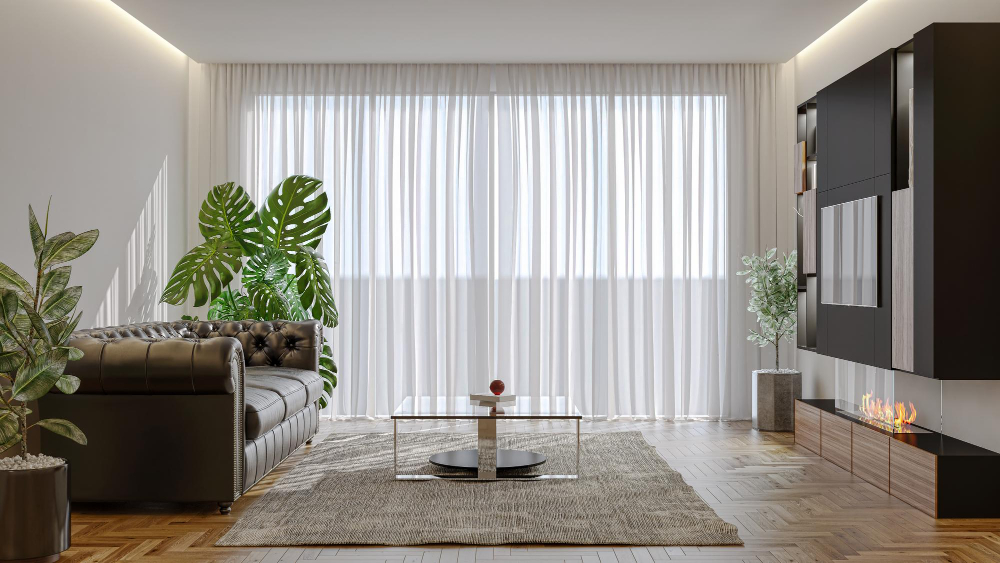Last updated on
Italian furniture conveys an innate sense of elegance and sophistication. But rather than resting on tradition, designers continue pushing boundaries and exploring new trends.
The latest Italian furniture collections from esteemed brands like Natuzzi Italia reveal intriguing forecasts for the future of interior décor. By studying these cutting-edge directions, we gain insights into what’s on the horizon for global interiors.
The Evolution of Craftsmanship and Technology

- Traditional Skills in Modern Times
Italian pieces are renowned for their exquisite craftsmanship. The future sees this tradition holding strong, with skilled artisans continuing to play a crucial role. However, they’re now armed with advanced technology and tools that allow for precision and intricacies previously unimaginable, indicating a harmonious blend of the old and the new.
- Technological Integration
As homes become smarter, Italian furniture is not far behind. Future designs will likely incorporate more technology, with pieces that can charge devices, integrate with home systems, and even adapt shape or color based on user preference or environmental factors.
Sustainable and Eco-friendly Materials
- Sustainability at the Forefront
The global push towards sustainability is influencing Italian furniture designers to adopt eco-friendly materials and practices. Look for increased use of recycled materials, sustainable wood sources, and non-toxic finishes.
- Innovative Material Combinations
Future trends may include unconventional material pairings that not only reduce environmental impact but also open up new aesthetic possibilities. Think recycled glass countertops paired with reclaimed wood structures, offering a blend of luxury and sustainability.
Shapes and Forms

- A Return to Nature and Geometry
Organic Shapes: Inspired by nature, future Italian furniture might feature more organic shapes and lines. This trend reflects a desire for harmony and tranquility in the home, with pieces that invite touch and create a sense of calm.
Geometric Boldness: In contrast, some designers are exploring bold geometric forms, creating pieces that are as much sculptural art as they are functional pieces. This trend speaks to a future where furniture makes a statement and defines space in innovative ways.
Color Palettes: Bold, Earthy, and Everything in Between
Furniture palettes will embrace rich saturation and eclectic combinations. Future trends include:
- Saturated Colors
Deep, intense hues from cobalt to ochre will replace subtle neutrals and pastels. People crave bold energizing color statements.
- Contrasting Color Combinations
Complementary contrasts in color schemes add dynamism and drama. Paired tones may intentionally clash to lively effect.
- Color Mixing and Tone Variation
Subtle variations in color shading and tone interest the eye while still keeping to a cohesive palette. Ombré-like fades will be popular.
- Personalized Color Customization
More item lines will offer customizable color options so buyers can perfectly match personal color preferences for a bespoke feel.
- Vintage Color Revivals
Colors of the past like mustard yellow, avocado green, or burnt orange will experience renewed vintage-inspired popularity in modern furniture.
Functionality Meets Aesthetics
Multi-functional Pieces: In the landscape of evolving Italian furniture trends, the future heralds a rise in multi-functional pieces that ingeniously blend beauty and practicality, a philosophy deeply embedded in brands like Natuzzi Italia.
As urban living spaces continue to shrink, the focus is on smart design solutions that optimize space without compromising on the inherent style and elegance NATUZZI ITALIA is renowned for.
Customization and Personalization: The future will see an increase in customizable options, allowing individuals to tailor pieces to their specific needs and tastes. This trend speaks to a growing desire for personalization in everything we own.
The Digital Era: Virtual Reality and Augmented Reality in Furniture Design
The digital era has ushered in groundbreaking tools that are transforming the Italian furniture industry. Virtual Reality (VR) and Augmented Reality (AR) are at the forefront, revolutionizing how consumers interact with items before making a purchase. These technologies are not just changing the game; they’re redefining it.
- Virtual Showrooms
Immersive Experience: Italian furniture brands are embracing VR to create immersive showrooms. These virtual spaces allow customers to explore collections in a 3D environment that closely mimics a physical showroom. Users can walk around, interact with pieces, and get a real feel for the size, scale, and detail of the furniture.
Personalized Visualization: VR showrooms offer a unique advantage – the ability to visualize how specific furniture pieces will look in a customer’s own space. Users can upload photos or dimensions of their rooms and then see how different pieces fit and complement their existing decor. This personalized experience significantly reduces the guesswork involved in shopping, ensuring that what you see is what you get.
- Augmented Reality Customization
Real-time Customization: AR takes personalization a step further. With AR apps, users can point their device’s camera to a space in their room and virtually place furniture pieces in it. But it’s not just about placement; many AR platforms allow users to customize the pieces in real-time. They can change colors, finishes, and sometimes even the design elements of a piece.
Enhanced Buying Confidence: This level of customization and visualization enhances the buying experience by leaps and bounds. Customers can make informed decisions, knowing exactly how a piece will look and fit in their space. It reduces the anxiety of online shopping and minimizes the likelihood of returns due to size or style mismatches.
Incorporating VR and AR into item design showcases industry innovation and a dedication to customer satisfaction. As digital advancements progress, these tools will become crucial for seamlessly connecting imagination with reality in interior design.
The Cultural Influence: Blending Global Trends with Italian Flair
Italian furniture has never existed in a vacuum. Future trends will likely continue to be influenced by global design movements, cultural exchanges, and cross-collaboration, all filtered through the unique lens of artistry. Even as it evolves, furniture is expected to retain its connection to its rich heritage, with future designs nodding to the past even as they look forward.
The Takeaway: A Future Built on Foundations of the Past
The future of Italian furniture is bright and bold, marked by an exciting blend of tradition and innovation. As trends come and go, the enduring appeal of Italian design remains rooted in its commitment to quality, craftsmanship, and a never-ending pursuit of beauty.
Whether it’s through sustainable practices, technological integration, or bold new shapes and colors, items continue to set the standard for the future of interior design.
Related reading:
Table of Contents





